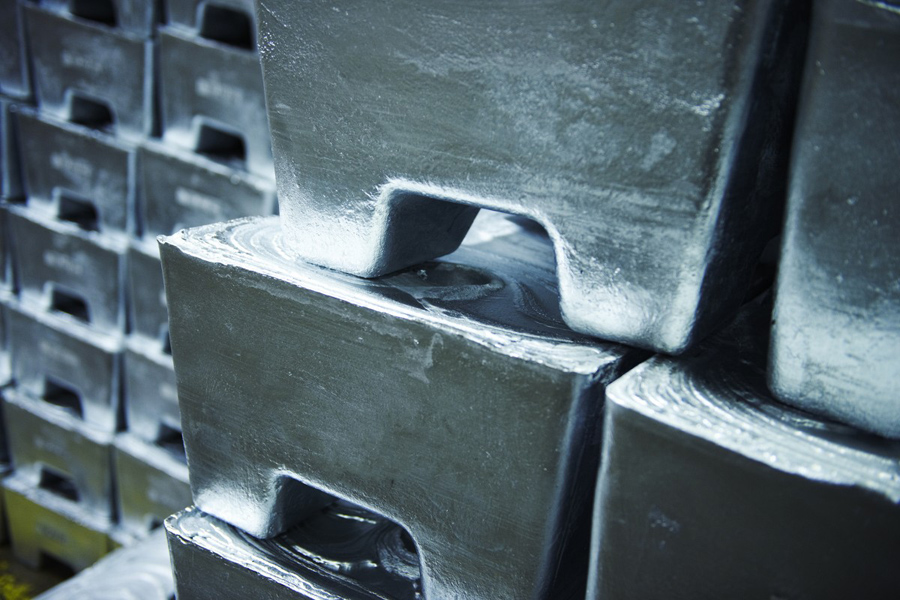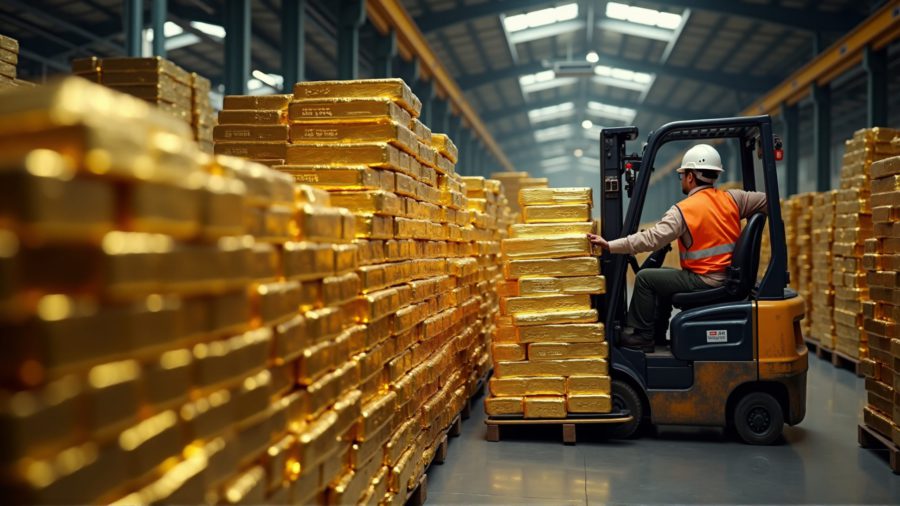Zinc bears on the attack again after LME stocks rise

Zinc is coming under sustained attack from bearish funds.
The trigger for the assault was Tuesday morning’s London Metal Exchange (LME) stocks report, showing 10,625 tonnes of inflow into exchange warehouses.
The London zinc price slumped from $2,867.00 per tonne to $2,821.50 in 30 minutes. It stabilised briefly before heading lower and was last around $2,815.00.
Funds have pounced on the stocks signal as evidence that zinc’s period of maximum supply tightness is now passing.
There can now be no doubting that the mined zinc concentrates segment of the market has flipped from supply deficit to surplus
They have been emboldened by signs that the raw materials segment of the supply chain has transitioned from shortfall to surplus. Metals surplus, zinc bears reason, must surely follow.
However, timing this shift in underlying market dynamics is difficult.
Similar bear attacks took place in September last year and again in February. In both cases they proved premature, the price recovering to a nine-month high of $2,958.00 at the start of April.
Have they called it right third time around? There are reasons to be cautious.
Treatment charges signal return to surplus
Zinc bears have got one thing right.
There can now be no doubting that the mined zinc concentrates segment of the market has flipped from supply deficit to surplus.
The gauge of the transition comes in the form of treatment charges, which are what a zinc smelter receives from a miner for converting concentrate into metal.
Spot charges have been on a steep upward trend in recent months as more raw material becomes available from new and restarted mines, such as New Century Resources, which has just reported a 50-percent jump in first-quarter production .
What looks like the benchmark deal for 2019 deliveries has confirmed the turnaround.
Canada’s Teck Resources and South Korean smelter Korea Zinc Inc have sealed a deal with a headline treatment charge of $245 per tonne.
That marks a sharp bounce from last year’s treatment charge of $147 per tonne and is the highest annual level achieved since 2015.
The swing in favour of smelters is reinforced by the return of price participation after two years of none.
The boost to smelter margins should stimulate higher capacity utilisation and allow raw materials surplus to travel down the supply chain into improved availability of refined metal.
This is particularly true of China, where refined zinc production has been sliding for over a year due to lack of raw materials.
Outside of China, the jump in treatment charge should come as a welcome relief to beleaguered Nyrstar, the world’s second-largest refined zinc producer.
The Belgian company has seen margins crushed over the last year to the point that it’s needed another financial bail-out from Trafigura to survive. This one will see the Swiss trade house assume almost complete control with a 98-percent stake in a new operating company.
Feast or famine in refined metal?
The change of supply dynamics in the zinc concentrates market has been closely followed by funds looking to play zinc from the short side.
Their problem so far is that it’s taken much longer than expected for mine surplus to become refined metal surplus, hence the two ultimately failed attempts to drive prices lower in the third quarter of last year and the first quarter of 2019.
Tuesday’s LME stocks report seems to be proof that things are starting to change in the refined metal market. But as ever with the London market, appearances can be deceptive.
The latest “arrivals” of zinc in the LME storage network bring the cumulative inflow so far this month to 20,800 tonnes.
That’s lifted headline LME inventory from a multi-year low of 50,425 tonnes to a current 66,475.
Their problem so far is that it’s taken much longer than expected for mine surplus to become refined metal surplus, hence the two ultimately failed attempts to drive prices lower in the third quarter of last year and the first quarter of 2019
But this apparent evidence of surplus might counter-intuitively be a sign of continued market tightness.
It’s no coincidence that metal is flowing into the LME system right now.
It’s doing so because of another, particularly vicious cash-date squeeze on the LME zinc contract.
The LME’s “tom-next” spread, essentially the cost of rolling a short position overnight, flexed out to an unprecedented $60 per tonne last Friday.
That trade was something of a one-off, Refinitiv time and sales data showing the spread traded only once at that level in the form of an end-of-day client cross.
But “tom-next” remained in steep $20-per-tonne backwardation over the course of Monday morning ahead of the clear-out of April positions on the ensuing open outcry “ring” session.
“Tom-next” was on Tuesday morning trading more calmly but the broader cash-to-three-months spread remains tight, ending Monday valued at $68 backwardation.
Faced with such severe penalties for rolling short positions, some have evidently opted to deliver physical metal against their exposure.
The 8,000 tonnes of zinc that showed up in LME warehouses in Rotterdam in Tuesday morning’s report has all the signs of being a distress delivery from off-market storage.
True, it’s evidence that there is more metal “out there” beyond the depleted LME inventory but it’s only been drawn into the LME system by what is by historical standards an extreme level of tightness.
Bad timing?
Timing zinc’s price peak is turning out to be just as tricky as timing the original rally.
There were several false starts to that rally as funds bought into the zinc deficit narrative only to be wrong-footed by sudden, large-tonnage deliveries of zinc into the LME storage network.
LME stock signals turned out to be a poor proxy for underlying market dynamics.
The question is whether they are any more reliable right now. This month’s deliveries of metal into LME sheds may not be a sign of imminent surplus but simply a normal market reaction to the elevated cash premium. That premium is predicated on a lack, rather than a surplus, of metal in the LME system.
Zinc bears are betting rising stocks mean the days of surplus have arrived.
If they’re wrong, there will be more pain for short-position holders in the weeks ahead.
(By Andy Home; Editing by Dale Hudson)
More News
Study confirms drop-in electrode technology enables 10 minute EV charging at -10°C
April 14, 2025 | 04:06 pm
Newmont deploys Ericsson private 5G at Australia’s largest underground mine
April 14, 2025 | 01:20 pm
{{ commodity.name }}
{{ post.title }}
{{ post.date }}




Comments